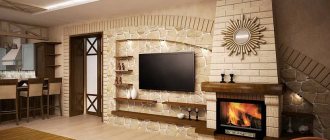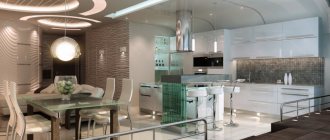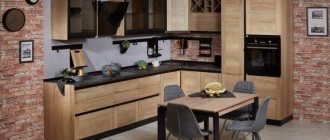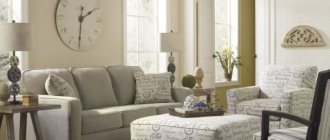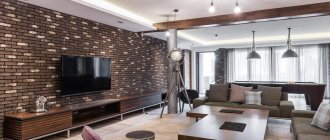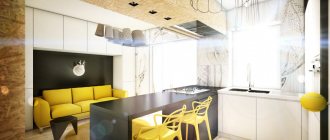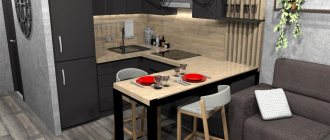Choosing a fireplace
The choice of a fireplace model is determined, first of all, by the task facing the buyer. If the fireplace will be used as a constant source of heat, then you need to use a fireplace that runs on wood, pellets or gas. However, choosing a fireplace power is not very simple and must take into account a number of factors, including the material and thickness of the walls, the number and tightness of windows, and the size of the heated room. When the fireplace power is too high, the device usually operates in a slow smoldering mode to avoid overheating the air in the room. And this, in turn, leads to the release of large amounts of harmful substances into the atmosphere, which is one of the main causes of its pollution. A low-power fireplace will not generate enough heat to heat a large space. Therefore, before purchasing a fireplace, it is better to consult with a specialist who sells this equipment. As a first approximation, you can focus on the empirical rule for choosing a fireplace, proportionally decreasing or increasing this ratio:
The fireplace's power of 17.6 kW will be sufficient to heat a room of 185.8 square meters. meters.
Living room with fireplace and TV - how to arrange the space?
Do you want to use a TV in the living room and at the same time an atmospheric fireplace - your dream? There are several ways to solve this problem! One of them is to place the fireplace in the corner of the wall, which optically separates the kitchen from the living room. Thus, the fireplace set will decorate two zones at the same time and will not interfere with you hanging the TV in front of the sofa.
A living room with a fireplace and TV will be easier for you if you choose a free-standing fireplace. However, do not forget to follow all safety rules, which include placing it at a suitable distance from the equipment - usually around 80 centimeters, but check what the manufacturer advises. There should be no flammable objects such as curtains near the fireplace. Also keep it at a sufficient distance from the TV - the surface of the fireplace becomes very hot, which can damage the device.
Also be sure to use suitable flooring around your freestanding fireplace. The flooring within a few tens of centimeters must be non-flammable, so panels, wood planks or carpeting will not be suitable. Use clinker brick or sheet metal around the heating fireplace.
- You can set up a living room with a fireplace and TV by choosing a free-standing fireplace, which should not be too close to the unit as the heat will damage it. You can also install a fireplace in the corner of the wall separating the kitchen from the living room, the placement of which will provide comfort while watching your favorite movies.
For a modern style, you can opt for a TV above the built-in fireplace.
Placement of the fireplace between the windows
The location of the fireplace (and chimney) will affect how well heat is distributed and retained in the home. It is believed that the best installation location is the room where you spend most of your time. Ideally, a fireplace model should be equipped with a fan that allows heat to be distributed through the duct system to the rest of the house. (For fireplaces with a water circuit, it is possible to connect to water heating radiators).
It is better to place the fireplace next to the interior walls of the room, but other placement options are also possible. One of the most spectacular is the installation of a wood-burning fireplace between two windows. This option has one drawback - the loss of a certain amount of thermal energy for heating the external wall, which, however, is easily solved by additional thermal insulation of the problem area.
A fireplace between the windows is a traditional option for placing a fireplace in a room.
Most often, a fireplace is installed in the center of the room between two large French windows. But no one cancels the frontal or corner installation of a fireplace between windows of different sizes. The design can be very different and determined by the material of the fireplace lining.
Selection criteria and key features
A fireplace between the windows, as mentioned earlier, is an excellent and quite advantageous option for those who want to achieve an original arrangement of furniture and a heating device in their house or apartment.
The fireplace opposite the window can be very diverse; before you buy such a heating variation, you need to determine its features, characteristics and parameters in more detail and detail. Thus, decide what role the stove will play, if you plan to use it as a main or secondary source of heating, it is best to give preference to wood, pellet, coal or gas stoves over classic-type fireplaces.
A fireplace, the center of which is the firebox into which fuel will be loaded and in which the fire will burn, must have a certain power, which is calculated based on the area of both one specific room and the entire house, as well as the number of windows, doors, their tightness, materials manufacturing of the house, its frame, cladding and thickness of walls, partitions.
If you bought a fireplace model with a high power, which is a lot to heat a specific area, it is necessary for such a heating unit to operate exclusively in slow burning mode. Thus, the temperature in the room will remain comfortable and the air will not dry out. A fireplace near a window with more power than necessary is not the best option, as well as a firebox with low power, as a result of the installation and use of which the room will not warm up sufficiently.
Before you buy a fireplace between the windows, you need to consult with a specialist who will help you choose the fireplace with the required power as correctly and accurately as possible, which will have a small strategic reserve. If we consider a specific example of a fireplace stove, then a firebox with a power of 18 kW is enough to fully and efficiently heat a room or several rooms with a total area of up to 180 square meters.
A window next to the fireplace is a rather original and interesting option, but just like any other, it has a number of features and basic key rules, points that you must familiarize yourself with before purchasing and placing the fireplace in such an area in the room.
The fireplace where it was installed should be located as conveniently and comfortably as possible, for example, if you decide to install the firebox near or between the windows, you need to choose a suitable room. The best option would be to install a fireplace between two windows in the room where you spend most of your free time, such as the living room. However, the room in which the fireplace is installed by you or a specialist should ideally release the generated thermal energy and transfer it to other rooms; this can be done with the help of a well-thought-out system of ventilation grilles and ducts placed in each room. Another profitable and convenient way to distribute thermal energy from the fireplace throughout all rooms in the house is to install the fireplace in a water heating circuit or water jacket. Such a fireplace will be connected to the heating radiator system in the house and, due to the heated water circulating through the pipes, will warm up every room and nook in the building.
The design of the window and fireplace with which will look quite classic and traditionally can be very diverse, however, if you decide to place your wood-burning heating unit between two windows, you need to be aware of the disadvantages of such a variation. The main disadvantage is that installing such a fireplace stove near windows or between them implies the loss of a large amount of thermal energy that will be generated as a result of the operation of the firebox. However, it is also possible to cope with this problem; to do this, you need to insulate and properly seal the wall near which the fireplace is located and thereby minimize the loss of thermal energy.
If you prioritize the high efficiency of your heating equipment and, based on this criterion, are going to choose a place to install the firebox, it is best to carry out the installation and choose the internal walls of the house as the optimal site. Thus, thermal energy will be distributed inside the building and in a minimum amount will exit through the main frame of the walls and the chimney.
The best and most traditional is an island placement of a fireplace, however, to install such a heating structure, the area of the room must be large enough and the layout must be correct. In this case, you can install an island fireplace in the center of the room between two French windows.
No less popular is another arrangement of fireplaces between windows, for example, the firebox and fireplace portal can be of a wall-mounted, corner type, which is also very convenient, practical and, unlike the island variation, these data are suitable for implementation in small and medium-sized rooms.
Wood burning fireplace stack effect
The stack effect is the so-called pressure reversal, when the smoke from a working fireplace flows in the opposite direction. In normal mode, warm air from the firebox rises, and cooler air rushes into it through the inlet ventilation holes, providing oxygen to the combustion zone. With normal draft, even when the fireplace is not working, the air will always flow from bottom to top, which can be easily checked with a piece of light paper in front of the open door of the combustion chamber.
But there are situations when cold air flows down and fills the room with smoke. This is possible, for example, in the case when the chimney pipe is located below the roof ridge and the rarefied pressure zone of the house is above the rarefied pressure zone of the chimney. Smoke can fill a room even if the double-glazed windows are hermetically sealed or if the chimney is not designed correctly. In the first case, to normalize the draft, it is recommended to open the windows or turn on fresh ventilation, and in the second case, use the services of a professional stove-maker or strictly adhere to the rules for laying the chimney. It should be of sufficient length, and a correctly positioned chimney tooth should not reduce the draft and stimulate the formation of vortex flows of smoke into the room, as shown in the pictures below.
The effect of draft reversal, when smoke flows in the opposite direction, can also occur when there is a difference in temperature in the room and the chimney. If the temperature in the chimney is lower than the temperature in the fireplace room, then cold air along with flue gases will be drawn into the house at low pressure. This phenomenon can occur both when igniting a fireplace and during the burning of coals, which is considered more dangerous. Therefore, ignition must be quick, the firewood must be dry, and intense combustion must be as long as possible so that the chimney has time to warm up as much as possible to subsequently maintain draft during the period when the fuel burns out. You can determine the decrease in draft in the chimney using hardware, for which it is enough to control the level of vacuum in the room: it should not be more than 5 Pa, otherwise an audible alarm will sound. (Rollover draft occurs when the air pressure in the room is 10 Pa and the temperature in the chimney is below one hundred degrees Celsius).
The chimney must fully match the size of the fireplace, and the diameters of the fireplace outlet pipe and the chimney pipe must be equal. If the chimney is larger than the stove or fireplace, the release of exhaust gases is slowed, increasing the deposition of creosote on the chimney walls, reducing the performance of the appliance. Old brick chimneys can be retrofitted with high-efficiency fireboxes sealed to a new flue system.
As can be seen from the above, installing a wood-burning fireplace and its operation is associated with a number of difficulties, from which electric fireplaces and biofireplaces running on grape alcohol are free. These devices cannot compare with wood or gas fireplaces in terms of their heating characteristics, but are very good as spectacular art objects.
